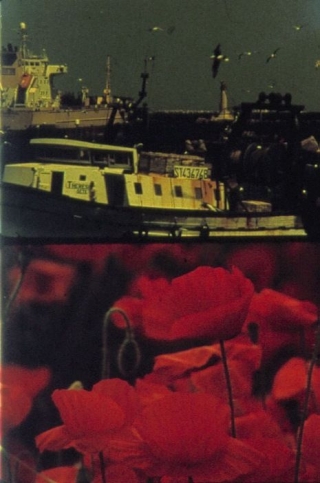Pip Chodorov and The Spools of Paris
Date: 4 September 2002 | Season: Infinite Projection
PIP CHODOROV AND THE SPOOLS OF PARIS
Wednesday 4 September 2002, at 7:30pm
London The Photographers’ Gallery
Pip Chodorov, filmmaker and director of the video label Re:Voir will present his selection of recent films from France and report on the Paris scene, which is alive with active publishers, distributors, screenings and independent groups. The programme will feature work made at L’Abominable and MTK, two collective laboratories, and includes films by Frédérique Devaux, Rose Lowder and Nicolas Rey.
Pip Chodorov, Numéro 4, France, 1990, colour, sound, 4 min (18fps)
Mahine Rouhi, Ptkho, France, 2000, b/w, sound, 7 min
Stefano Canapa, Promenaux, France, 2001, b/w, sound, 6 min
Colas Ricard, Tandem, France, 2001, colour, sound, 6 min
Nicolas Rey, Terminus for You, France, 1996, b/w, sound, 9 min
Marcelle Thirache, L’Arbre Bleu, France, 2001, colour, silent, 4 min (18fps)
Frédérique Devaux, Logomagie, France, 1999, colour, sound, 4 min
Rose Lowder, Les Coquelicots, France, 2000, colour, silent, 3 min (18fps)
Othello Vilgarde, Terrae, France, 2001, b/w, sound, 10 min
Dominik Lange, Chrysalides en explosion, France, 2001, colour, sound-on-cd, 17 min
“In these new lyric works and optical printer films, contemporary filmmakers continue to walk through the world and report what they see, and how they see. As Pthko shows us, some of the films are misleadingly abstract. Promenaux takes us through Paris, its jazz, its streets, its train tracks. In Tandem, train tracks become a metaphor for the film strip. Terminus for You continues the analogy in the Paris metro, its moving sidewalks, its regularly spaced posters and its animated characters carrying the metaphor, until the decomposition of the film material itself reminds us that all is illusory, all is grain and light. Terminus For You, L’Arbre Bleu and Logomagie are all worked by hand on the emulsion, whereas Numéro 4 and the last three films, Poppies, Terrae and Chrysalides use the movie camera as a still camera, flickering between different stills of natural forms, proving once again that movement is not created in the film but in the brain.” (Pip Chodorov, 2002)
